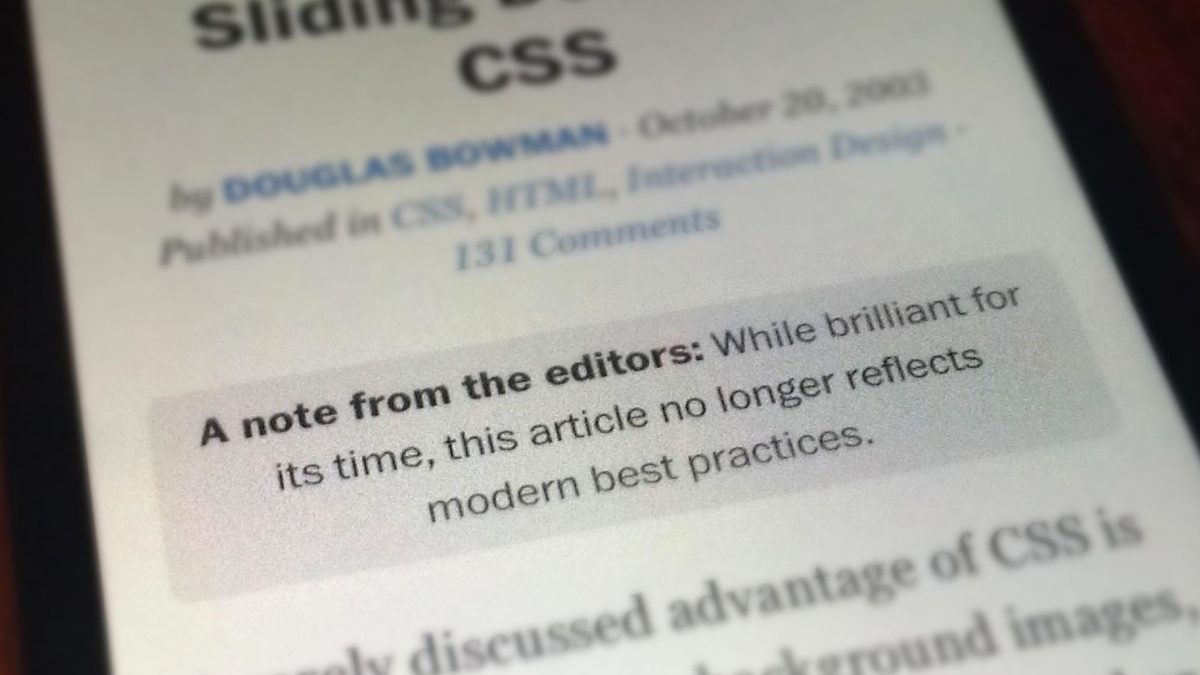In my last post, I mentioned I was trialling the SUIT CSS naming convention as I redevelop this site. More generically, let’s address why a naming convention should be used at all.
For the purposes of this post, I’m talking specifically about class naming conventions. (While one may have naming conventions for JavaScript functions, variables, and HTML IDs too, they’re not the focus of this post.) (more…)



